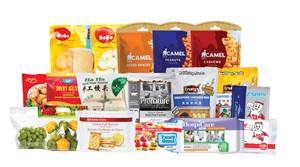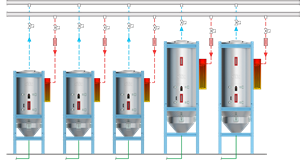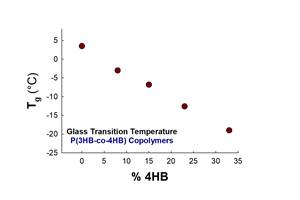Automated Die, Feedblock System Improves Efficiencies at Cast Film Processor
Reifenhäuser's PAM automation systems helps Bogucki Folie reduce waste at startup while slashing time between changeovers.
One of Poland’s leading film processors has reaped the benefits of production automation by virtue of its recent investment in Reifenhäuser's PAM (precise, autonomous, mechatronic) technology for flat dies and coextrusion adapters.
Introduced at K2022, Reifenhäuser says the PAM system enables dies and adapters to be precisely adjusted automatically and mechatronically from the line’s operating panel. This is said to be significantly faster than conventional control by hand or or via thermal expansion bolts, and reportedly enables faster startup of production, higher output and improved overall equipment efficiency. Scrap and material usage are also significantly reduced, Reifenhäuser says. Moreover, recipes that have been set once can be stored and recalled at any time so they can be reproduced exactly, even by inexperienced line operators.
The technology relies on what looks like a belt-driven Allen wrench, which traverses the die and adapter to make bolt adjustments. More than one of these “traveling wrenches” can be deployed on the die, depending on its width.

PAM system here shown on flat die. Photo: Reifenhäuser
Founded in 1983, Poland’s specializes in the production of high-quality, multilayer food and technical packaging films, as well as barrier films, having both blown and cast film capacity. Its traditional product is a three-layer, thin collation film for beverage packs. “However, production facilities in our company have gotten a bit old,” says Wiktor Bogucki, company owner and board member. “So we decided to invest in new technologies to increase our production capacity, lower production costs and reduce production waste while maintaining or improving the quality of the products.”
He continues, “We also want to achieve a higher level of automation to become less dependent on skilled personnel. The shortage of skilled workers is one of the biggest problems in our industry in Poland. Therefore, as part of our investment plans, we were looking for an efficient, reliable and automated line that would meet our growing requirements.”
To that end, Bogucki Folie embarked on what the owner calls “extensive market analysis,” evaluating various equipment manufacturers and suppliers of raw materials.
Bogucki states, “Reifenhäuser has been present on the global market and the Polish market for many decades. It has very good references from packaging film producers. A major advantage is the possibility of carrying out tests in advance in the Reifenhäuser technical center at the company headquarters in Troisdorf (Germany) on the latest production equipment, where both raw material formulations and product optimizations can be tested.”

Depicted is PAM technology on a coextrusion feedblock.
Source: Reifenhäuser
Bogucki says the Reifenhäuser systems met its expectations during the tests, as PAM was put to the task on a Reifenhäuser CSC line running all the film processor’s recipes. And since installing the new system at its plant, Bogucki says his company “has reduced the time for product changes on our line to a minimum.” He adds, “We also are producing significantly less waste during setup. Overall, PAM gives us maximum flexibility and resource efficiency thanks to the use of automated actuators instead of the usual thermal expansion bolts, which also consume significantly more energy due to the permanent power supply.”
He adds, “Our production will be more environmentally friendly, more efficient and more economical than before — while maintaining the same high film quality. The investment in the new line will also give us the opportunity to accept more demanding orders in shorter series. PAM supports us here when starting up new products, stored recipes can be reproduced at the touch of a button. The products are of the highest quality, while at the same time we significantly reduce energy consumption and other production costs.”
Related Content
Flexible-Film Processor Optimizes All-PE Food Packaging
Tobe Packaging’s breakthrough was to create its Ecolefin PE multilayer film that could be applied with a specialized barrier coating.
Read MoreHow to Effectively Reduce Costs with Smart Auxiliaries Technology
As drying, blending and conveying technologies grow more sophisticated, they offer processors great opportunities to reduce cost through better energy efficiency, smaller equipment footprints, reduced scrap and quicker changeovers. Increased throughput and better utilization of primary processing equipment and manpower are the results.
Read MoreHow to Decrease the Extrudate Temperature in Single-Screw Extruders
In many cases, decreasing the discharge temperature will improve product quality and perhaps even boost rate. Here are ways to do it.
Read MoreFilm Extrusion: Boost Mechanical Properties and Rate of Composting by Blending Amorphous PHA into PLA
A unique amorphous PHA has been shown to enhance the mechanical performance and accelerate the biodegradation of other compostable polymers PLA in blown film.
Read MoreRead Next
Making the Circular Economy a Reality
Driven by brand owner demands and new worldwide legislation, the entire supply chain is working toward the shift to circularity, with some evidence the circular economy has already begun.
Read MoreBeyond Prototypes: 8 Ways the Plastics Industry Is Using 3D Printing
Plastics processors are finding applications for 3D printing around the plant and across the supply chain. Here are 8 examples to look for at NPE2024.
Read MoreFor PLASTICS' CEO Seaholm, NPE to Shine Light on Sustainability Successes
With advocacy, communication and sustainability as three main pillars, Seaholm leads a trade association to NPE that ‘is more active today than we have ever been.’
Read More














